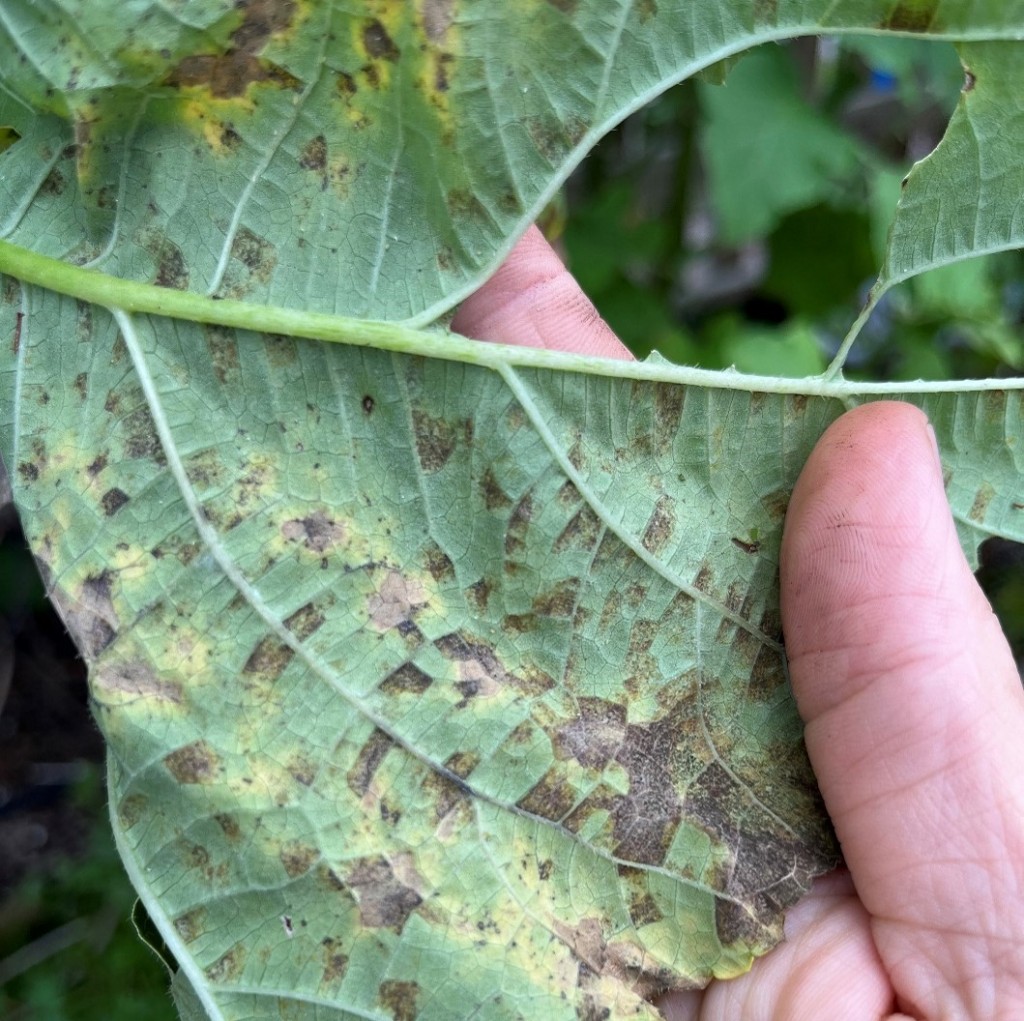From Clemson Plant Pathologist Tony Keinath and USDA Plant Pathologist Gabriel Rennberger.
August is the time of the year when Cercospora leaf spot appears on okra. This Cercospora leaf spot doesn’t look like Cercospora leaf spots on other crops, such as beet. Most of the disease is on the leaf underside. On the top of the leaves, only small spots are visible.

On the bottom of the leaves, dark sooty patches of the Pseudocercospora fungus can be seen. The patches are limited by veins, a pattern that resembles downy mildew on cucumber, but there is no downy mildew disease known on okra.

In general, Cercospora leaf spots show up in late summer and fall during periods of frequent rain or heavy dew and temperatures below 90°.
Cercospora leaf spot that is as severe as shown in the photo above will cause leaf drop on ‘Clemson Spineless,’ ‘Emerald,’ ‘Louisana Green Velvet,’ ‘Red Burgundy,’ and possibly other okra cultivars. This level of disease can reduce pod yields.
Four fungicides are registered for Cercospora leaf spot on okra in the 2022 Southeast Vegetable Crop Handbook page 245. Note that three of them include a FRAC 3 component, so growers should choose one of the three, Topguard EQ, Topguard, or tebuconazole (Monsoon or other generic formulations), and rotate it with chlorothalonil.